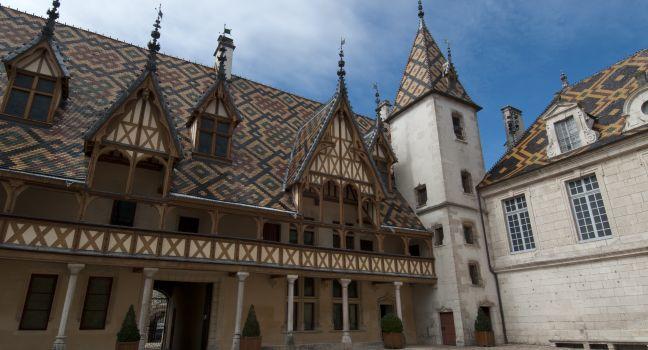Hospices de Beaune

With its steep, gabled roof colorfully tiled in intricate patterns, the famed Hospices de Beaune is this city’s top attraction—and one of Burgundy’s most iconic sights. Better known to some as the Hôtel-Dieu, it was founded in 1443 as a hospital to provide free care for the poor after the Hundred Years' War. The interior looks medieval but was repainted by 19th-century restorer Ouradou (Viollet-le-Duc's son-in-law); it centers on the grand salle, more than 160 feet long, with the original furniture, a great wooden roof, and the super-picturesque
But the showstopper at the Hôtel-Dieu is Rogier Van der Weyden's stirring, gigantic 15th-century masterpiece The Last Judgment, commissioned for the hospital's chapel by Rolin. The intense colors and mind-tripping imagery were meant to scare the illiterate patients into religious submission. Notice the touch of misogyny; more women are going to hell than to heaven, while Christ, the judge, remains completely unmoved. The Hospices own around 150 acres of the region's finest vineyards, much of it classified as Grand or Premier Cru.



